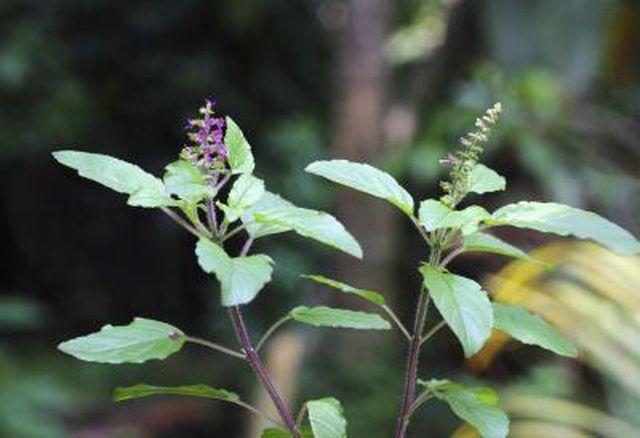Bulbs
Flower Basics
Flower Beds & Specialty Gardens
Flower Garden
Garden Furniture
Garden Gnomes
Garden Seeds
Garden Sheds
Garden Statues
Garden Tools & Supplies
Gardening Basics
Green & Organic
Groundcovers & Vines
Growing Annuals
Growing Basil
Growing Beans
Growing Berries
Growing Blueberries
Growing Cactus
Growing Corn
Growing Cotton
Growing Edibles
Growing Flowers
Growing Garlic
Growing Grapes
Growing Grass
Growing Herbs
Growing Jasmine
Growing Mint
Growing Mushrooms
Orchids
Growing Peanuts
Growing Perennials
Growing Plants
Growing Rosemary
Growing Roses
Growing Strawberries
Growing Sunflowers
Growing Thyme
Growing Tomatoes
Growing Tulips
Growing Vegetables
Herb Basics
Herb Garden
Indoor Growing
Landscaping Basics
Landscaping Patios
Landscaping Plants
Landscaping Shrubs
Landscaping Trees
Landscaping Walks & Pathways
Lawn Basics
Lawn Maintenance
Lawn Mowers
Lawn Ornaments
Lawn Planting
Lawn Tools
Outdoor Growing
Overall Landscape Planning
Pests, Weeds & Problems
Plant Basics
Rock Garden
Rose Garden
Shrubs
Soil
Specialty Gardens
Trees
Vegetable Garden
Yard Maintenance
How to Grow a Tulsi Plant
How to Grow a Tulsi Plant. Prized for its fragrant foliage and dainty violet, pink or white flowers, tulsi (Ocimum tenuiflorum, syn. O. sanctum) is widely grown as both a culinary herb and ornamental plant. Perennial in U.S. Department of Agriculture plant hardiness zones 10b through 11, it matures into a 2- to 3-foot-tall bush covered in slender,...
Prized for its fragrant foliage and dainty violet, pink or white flowers, tulsi (Ocimum tenuiflorum, syn. O. sanctum) is widely grown as both a culinary herb and ornamental plant. Perennial in U.S. Department of Agriculture plant hardiness zones 10b through 11, it matures into a 2- to 3-foot-tall bush covered in slender, gray-tinged leaves. Tulsi grows equally well in containers and in the ground, although container-grown specimens are often smaller and shorter-lived than those grown in a garden. Both have similar growing requirements with several climate-related differences.

Things You'll Need
pH meter or test strips
Compost or potting soil with perlite
Tape measure or ruler
Disposable measuring spoons
15-15-15 or 7-9-5 water-soluble fertilizer
1-gallon container
Pruning shears
Rubbing alcohol
Watch, clock or timer
Measuring cups
Dish soap
Spray bottle
Mulch
8- to 16-inch clay pot (optional)
Step 1
Grow tulsi in moderately fertile, fast-draining soil with a pH of 6.1 to 7.5, which is in the neutral range. Amend heavy, clay-based soil and porous, sandy soil with a 2-inch-thick layer of compost to improve drainage and moisture retention. If you're growing tulsi in a pot, use standard potting soil that contains perlite.
Step 2
Locate tulsi where it receives at least six hours of direct sunlight daily, placing it in a south-facing garden or near a south-facing window if growing it indoors. Provide light shade during the hottest part of the day if your climate is very hot and dry or the leaves show signs of scorching. Space multiple plants 24 to 36 inches apart.
Step 3
Water tulsi deeply but infrequently to prevent soil-borne fungal infections. Run water at the base of a garden-grown plant until the top 2 inches of soil are very moist. Water container-grown plants until the soil is saturated and excess moisture trickles from the pot. Let the top half inch of soil dry out between waterings.
Step 4
Reduce watering by half in winter to help prevent diseases. Let the soil dry out completely between waterings and avoid watering garden-grown tulsi if rain fell the previous week. Moisten the top inch of soil if the plant shows signs of wilting, but continue to let the soil dry out between waterings.
Step 5
Feed tulsi biweekly from midspring till midsummer during the active growing season by dissolving 1/2 teaspoon of water-soluble fertilizer in 1 gallon of water and replacing one watering every two weeks with the solution. Use general-purpose 15-15-15 fertilizer if you grow tulsi for culinary purposes or use a bloom-promoting 7-9-5 ratio if you grow the plant as an ornamental.
Step 6
Withhold all supplemental fertilizing from late summer until the following spring when growing tulsi outdoors. Reduce feeding by half during the winter months if growing tulsi in a pot. Cease feeding entirely until spring if your plant produces an excess of spindly growth.
Step 7
Prune tulsi as needed year-round to control its size and promote a bushier, more-compact appearance. Before pruning the plant, soak the blades of your pruning shears in a solution of half rubbing alcohol and half water for five minutes to kill pathogens. Remove no more than half the stem growth when pruning.
Step 8
Examine the undersides of the plantís leaves for the presence of small, whitish insects, which may be a sign of whitefly infestation. Treat whiteflies by spraying the plant liberally with insecticidal soap and repeating the application every seven to 10 days until the infestation subsides. To make your own 2-percent-strength insecticidal soap solution, add 2 teaspoons of mild dish soap and 1 pint of water to a plastic spray bottle and shake well to mix.
Step 9
Watch for symptoms of root infections, such as a wilted appearance, yellow foliage or dieback at the stem tips, and discard all affected plants to prevent the spread of pathogens to other plants. To head off root infections, grow tulsi in a suitably fast-draining site and spread a 1-inch-thick layer of mulch around each plant to reduce the need for watering.
Step 10
Move container-grown tulsi indoors in autumn if you live in USDA zone 10a or below, placing the plant near a sunny window where the temperature stays consistently above 65 degrees Fahrenheit. In spring, move the plant to a sheltered location in the garden two weeks after the average last frost date in your area to allow it to reacclimate to outdoor humidity and light levels.
Step 11
Repot container-grown tulsi in fresh potting soil each year. Depending on the plant's size, use an 8- to 16-inch clay pot with at least two bottom drainage holes.